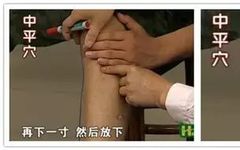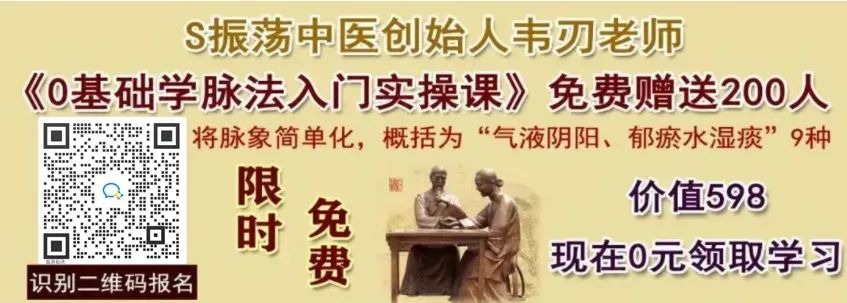
The principle of meridians in Traditional Chinese Medicine (TCM) states, “Where there is pain, there is obstruction; where there is no pain, there is no obstruction.” Therefore, when treating diseases, one must first identify which meridian is obstructed and then target the key acupuncture points along that meridian.
For example, for stomach diseases, one should select points along the Zu Yangming Wei Jing (Foot Yangming Stomach Meridian), and based on the symptoms of the stomach disease, also select points along the related organ meridians. Each acupuncture point is like a medicinal herb; using points is akin to using medicine, with the monarch, minister, assistant, and envoy roles, and when used appropriately, the effects are immediate.
1. Acupuncture Point Name: Jian Tong (Shoulder Pain Point, located on the Zu Yangming Wei Jing, also known as Zhongping Point)
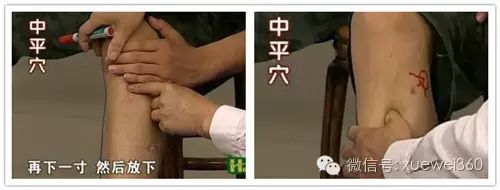
Point Location Method: Approximately three inches below Zu San Li (St36), at the edge of the tibia.
Main Treatment: Pain relief, blood pressure reduction, mental awakening, vasodilation, and internal organ regulation.
Technique: Apply strong pressure for 1-2 minutes, treating the left side for the right and vice versa.
2. Acupuncture Point Name: Lie Que (Hand Taiyin Lung Meridian, Luo Point, Eight Meridians Meeting Point, connects to Ren Meridian)
Point Location Method: Cross the thumbs, at the depression where the index fingers point.
Main Treatment: Head pain, clearing lung heat, regulating lung qi, and relieving throat discomfort.
Technique: Press directly upwards at an angle.
3. Acupuncture Point Name: Tong Li (Hand Shaoyin Heart Meridian, Luo Point)
Point Location Method: One inch above Shen Men (Ht7).
Main Treatment: Bradycardia.
Technique: Massage for 1-3 minutes, 300-500 times.
4. Acupuncture Point Name: Da Ling (Hand Jueyin Pericardium Meridian, Yuan Point)

Point Location Method: At the midpoint of the first transverse wrist crease, between the two tendons.
Main Treatment: Insomnia.
Technique: Press for 1-2 minutes, applying direct pressure at an upward angle.
5. Acupuncture Point Name: Shen Men (Hand Shaoyin Heart Meridian, Yuan Point)
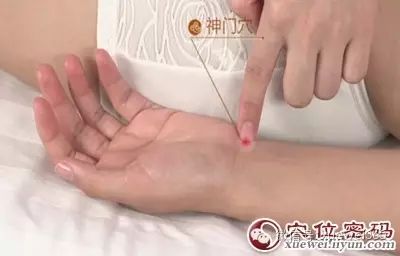
Point Location Method: At the depression above the ulnar side of the wrist crease.
Main Treatment: Hyperhidrosis.
Technique: Press directly inward for 1-2 minutes.
6. Acupuncture Point Name: Yong Quan (Foot Shaoyin Kidney Meridian, Jing Point)
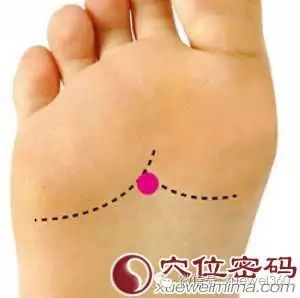
Point Location Method: At the junction of the front and middle third of the sole of the foot, where it depresses when the toes are curled.
Main Treatment: Heat in the soles of the feet.
Technique: Massage 36 times.
7. Acupuncture Point Name: Mang Yu (Chong Meridian, Meeting Point of Foot Shaoyin)
Point Location Method: Five fen beside the navel.
Main Treatment: Headache.
Technique: Press with the thumb and middle finger, pushing upwards at an angle, treating left for right and vice versa.
8. Acupuncture Point Name: Shao Hai (Hand Shaoyin Heart Meridian, He Point)
Point Location Method: Flex the elbow, at the midpoint of the line connecting the inner epicondyle of the humerus and the end of the elbow crease.
Main Treatment: Tachycardia.
Technique: Massage for 1-2 minutes (60-70 beats/min).
9. Acupuncture Point Name: Xuan Zhong (Foot Shaoyang Gallbladder Meridian, Meeting Point of Eight Hui)
Point Location Method: Three inches directly above the tip of the outer ankle, at the posterior edge of the fibula.
Main Treatment: Migraine.
Technique: Massage for 3-6 minutes, treating left for right and vice versa.
10. Acupuncture Point Name: Ding Chuan (Hua Tuo’s Jia Ji)
Point Location Method: Five fen beside the Dazhui (Du14).
Main Treatment: Asthma.
Technique: Press at an upward angle for 1-2 minutes.
11. Acupuncture Point Name: Zhi Xie (On the Ren Meridian, between Guanyuan and Shimen)
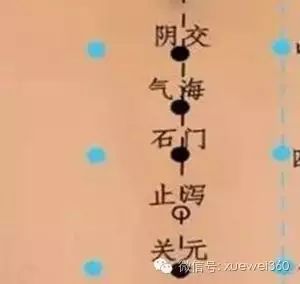
Point Location Method: Two and a half inches below the navel.
Main Treatment: Diarrhea.
Technique: Press directly upwards at a slight angle.
12. Acupuncture Point Name: Jiang Ya (On the Foot Jueyin Liver Meridian)
Point Location Method: Between Dadu and Taichong.
Main Treatment: Hypertension.
Technique: Vibrate and press for 1-2 minutes.
13. Acupuncture Point Name: Zu San Li (Foot Yangming Stomach Meridian; He Point, Lower He Point of Stomach)
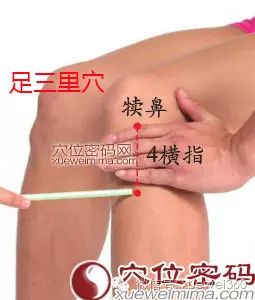
Point Location Method: Three inches below the outer knee eye, four finger widths.
Main Treatment: Abdominal diseases, hyperlipidemia, and relieving stomach pain.
Technique: Press downwards at an angle for 1-2 minutes. For stomach pain, use both thumbs to massage the patient’s Zu San Li points (located three inches below the knee, at the outer side of the tibia) until a sensation of soreness and numbness is felt, which can significantly relieve stomach pain within 3-5 minutes.
14. Acupuncture Point Name: Da Gu Kong (Extraordinary Point)
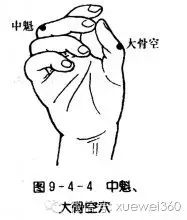
Point Location Method: At the midpoint of the transverse line connecting the proximal and distal phalanges of the thumb.
Main Treatment: Cataracts.
Technique: Apply strong pressure with a needle, as heavier techniques yield better results.
15. Acupuncture Point Name: Shen Ting (Du Meridian)
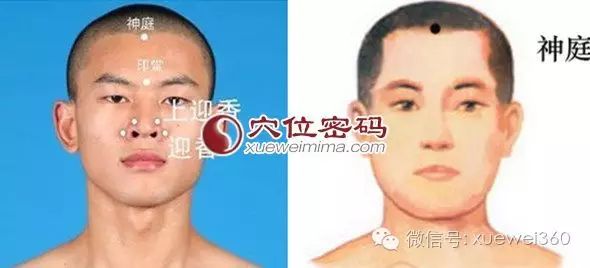
Point Location Method: 0.5 inches directly above the center of the hairline.
Main Treatment: Mental fatigue (awakening the mind).
Technique: Press with the middle finger.
16. Acupuncture Point Name: Xue Hai (Foot Taiyin Spleen Meridian)
Point Location Method: Two inches above the inner edge of the patella.
Main Treatment: Eyelid edema.
Technique: Apply strong pressure with the thumb.
17. Acupuncture Point Name: Xia Du (Extraordinary Point, one of the Eight Evils)

Point Location Method: Five fen above the webbing between the fourth and fifth fingers on the back of the hand.
Main Treatment: Fever.
Technique: Continuous pinching for 1-2 minutes.
18. Acupuncture Point Name: Niu Shang (Extraordinary Point)
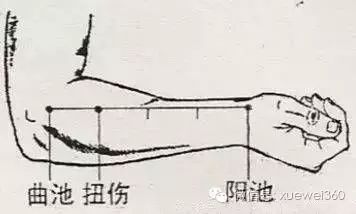
Point Location Method: At the intersection of the upper 1/4 and lower 3/4 of the line connecting Qu Chi (LI11) and Yang Chi (SJ5).
Main Treatment: Acute lumbar sprain.
Technique: Apply strong pressure while pressing both arms at the sprain point.
19. Acupuncture Point Name: Zuo Gu (New Point)
Point Location Method: One inch below the midpoint of the line connecting the greater trochanter and the tip of the coccyx.
Main Treatment: Sciatica.
Technique: Apply strong pressure directly downwards.
20. Acupuncture Point Name: Zu Gen Dian (Hand Needle Point)
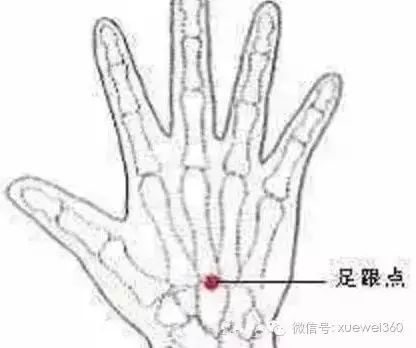
Point Location Method: Find the painful point on the line connecting Da Ling (PC8) and Lao Gong (PC8).
Main Treatment: Heel pain.
Technique: Massage for 1-2 minutes.
21. Acupuncture Point Name: Cheng Jiang (Ren Meridian)
Point Location Method: At the central depression of the lip groove.
Main Treatment: Pediatric anorexia.
Technique: Moderate pressure massage for 3-5 minutes.
22. Acupuncture Point Name: Yi Niao Dian (Hand Needle Point)
Point Location Method: At the midpoint of the transverse line of the little finger.
Main Treatment: Pediatric enuresis (kidney deficiency).
Technique: Light pressing for 1-3 minutes.
23. Acupuncture Point Name: Tian Zhu (Foot Taiyang Bladder Meridian)
Point Location Method: At the depression 5 fen behind the hairline of the neck, 1.5 inches beside the Ya Men (GB12).
Main Treatment: Throat swelling and pain.
Technique: Light massage for 2-4 minutes.
24. Acupuncture Point Name: Tai Chong (Foot Jueyin Liver Meridian, Shu Point, Yuan Point)
Point Location Method: 1.5 inches above the gap between the first and second toes on the dorsum of the foot.
Main Treatment: Nosebleeds.
Technique: Apply vertical pressure.
25. Acupuncture Point Name: Shang Ying Xiang (Extraordinary Point)
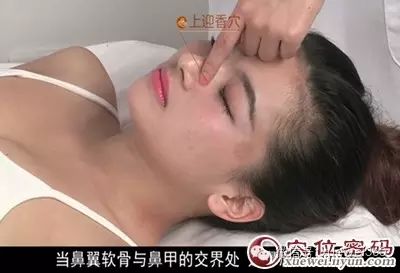
Point Location Method: Five fen below the inner canthus of the eye.
Main Treatment: Sinusitis.
Technique: Massage for 1-2 minutes.
26. Acupuncture Point Name: Shao Ze (Hand Taiyang Small Intestine Meridian, Jing Point)
Point Location Method: On the ulnar side of the little finger, 0.1 inches from the nail.
Main Treatment: Acute conjunctivitis.
Technique: Apply strong pressure with the thumb.
27. Acupuncture Point Name: Da Shu (Foot Taiyang Bladder Meridian)
Point Location Method: 1.5 inches beside the spinous process of the first thoracic vertebra.
Main Treatment: Stye.
Technique: Press downwards at an angle towards the cervical vertebrae.
28. Acupuncture Point Name: Guan Xin (Heart Point)
Point Location Method: At the midpoint of the line connecting the left foot’s Jie Xi (UB66) to the second and third toe bones.
Main Treatment: Coronary heart pain, pain relief.
Technique: Press with the fingertip or use a ballpoint pen tip for 5 minutes.
29. Acupuncture Point Name: Yuan Jun (Heart Point)
Point Location Method: Located at the center of the palm of the left hand, below the middle finger joint.
Main Treatment: Coronary heart disease, angina.
Technique: Use the one-finger Zen technique to press and knead.
30. Acupuncture Point Name: Guan Yuan (Ren Meridian, Small Intestine Mu Point)
Point Location Method: Four finger widths below the navel, along the midline.
Main Treatment: Insomnia.
Technique: Massage 100-200 times while half-sitting, soak feet in 45°C water, and press the Yong Quan point 200 times.
31. Acupuncture Point Name: Si Bai (Foot Yangming Stomach Meridian)
Point Location Method: When looking straight ahead, at the depression directly below the pupil, at the infraorbital foramen.
Main Treatment: Constipation.
Technique: Massage the abdomen 200 times from right to left; during defecation, press both sides of Si Bai to enhance the effect (located at the depression at the end of the tailbone).
32. Acupuncture Point Name: An Mian (Extraordinary Point)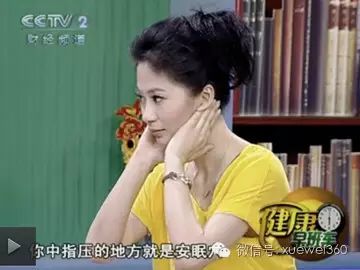
Point Location Method: At the midpoint between Yei Feng (SJ17) and Feng Chi (GB20), with the little finger pressing against the earlobe, and the middle finger pressing at the location of An Mian, which is right at the edge of the occipital bone. When having trouble sleeping, count while massaging it before bed.
Main Treatment: Insomnia, migraine.
Technique: Moderate pressure.
33. Acupuncture Point Name: Qian Zheng (Extraordinary Point)
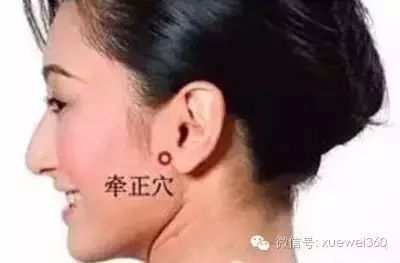
Point Location Method: 5 fen to 1 inch in front of the earlobe.
Main Treatment: Facial nerve paralysis, oral ulcers.
Technique: Moderate pressure at a forward angle (for oral ulcers, add the small intestine reflex area).
34. Acupuncture Point Name: Shi Mian (Extraordinary Point, on the sole)
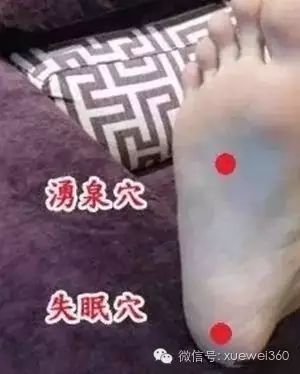
Point Location Method: At the midpoint of the heel on the sole.
Main Treatment: Insomnia, heel pain.
Technique: Apply strong pressure.
35. Acupuncture Point Name: Shan Yao (Foot Taiyang Bladder Meridian)
Point Location Method: On the calf, at the intersection of the upper third and middle third of the line connecting Cheng Shan (BL57) and Kun Lun (BL60), there is a painful point.
Main Treatment: Lumbar sprain, also known as “shining waist.”
Technique: Press down. The patient lies face down, and the practitioner finds the “shining waist” points on both sides, pressing with both thumbs suddenly, releasing 3-5 times, then gently massaging the lower back for a few minutes to finish the treatment. After one session, the patient often shows significant improvement, and after 1-4 treatments, the lumbar pain symptoms will disappear.
36. Acupuncture Point Name: Luo Zhen (Extraordinary Point)
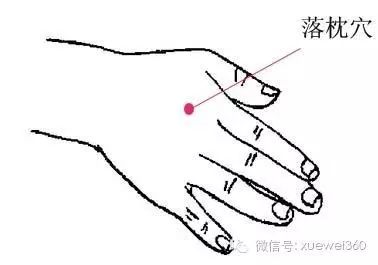
Point Location Method: On the back of the hand, between the second and third metacarpals, about 0.5 inches behind the metacarpophalangeal joint.
Main Treatment: Stiff neck.
Technique: The Luo Zhen point is on the back of the hand. Touch the area between the index and middle fingers, moving towards the wrist, and at the point where the bones narrow, press down. Use the fingertip or the rounded end of a pen (not the tip) to apply pressure, stimulating this point to relieve neck stiffness.
37. Acupuncture Point Name: Tai Yang (Extraordinary Point)
Point Location Method: In the temporal region, at the depression between the brow tip and the outer canthus, about one finger width back.
Main Treatment: Headache.
Technique: During a headache, the patient can use both index fingers to press on both sides of the Tai Yang point (located between the brow tip and the outer eye corner, about one inch back), pressing until a sensation of fullness is felt, and then rotating in a clockwise direction for about 1 minute to relieve the headache.
38. Acupuncture Point Name: He Gu (Hand Yangming Large Intestine Meridian)
Point Location Method: To locate this point, the patient should flex the wrist against the palm, naturally forming a half-fist. The He Gu point is located on the back of the hand, at the midpoint of the second metacarpal, on the thumb side (or on the back of the hand, between the first and second metacarpals, at the radial side of the second metacarpal). Another simple way to find it is to form a 45-degree angle with the thumb and index finger; the intersection at the extension of the bones is the point.
Main Treatment: Syncope.
Technique: In cases of heat stroke, stroke, or collapse, if the patient suddenly faints and loses consciousness, with a pale complexion and profuse sweating, press the He Gu point (located above the tiger’s mouth) with the thumb for 2-3 minutes, which generally alleviates the condition.
39. Acupuncture Point Name: Ren Zhong (Ren Meridian)
Point Location Method: This point is located on the face, at the intersection of the upper third and middle third of the philtrum.
Main Treatment: Shock.
Technique: Stimulating the Ren Zhong point can raise blood pressure and excite the respiratory center. In cases of stroke, heat stroke, poisoning, or allergic reactions where the patient suddenly becomes unconscious, breathing stops, blood pressure drops, or shock occurs, pressing the Ren Zhong point with the thumb can serve as an emergency measure.
40. Acupuncture Point Name: Lao Gong (Hand Jueyin Pericardium Meridian, Ying Point)
Point Location Method: The Lao Gong point is located in the palm of the hand, between the second and third metacarpals, closer to the third metacarpal, at the tip of the middle finger when the fist is clenched.
Main Treatment: Hypertension.
Technique: In cases of hypertension due to anger, rage, excitement, or fatigue, blood pressure can rise sharply, posing a significant threat to the patient’s life. At this time, pressing the Lao Gong point (located in the palm, between the middle and ring fingers) can gradually restore blood pressure to normal.
41. Acupuncture Point Name: Shao Shang (Hand Taiyin Lung Meridian, Jing Point)
Point Location Method: The Shao Shang point is located on the outer side of the thumb, 1 fen from the corner of the nail.
Main Treatment: Hiccups.
Technique: During hiccups, the patient can press the Shao Shang point with the thumb and index finger until a sensation of soreness is felt, for about half a minute to 1 minute, which can stop the hiccups.
42. Acupuncture Point Name: Nei Guan (Hand Jueyin Pericardium Meridian, Luo Point, Eight Meridians Meeting Point, connects to Yin Wei Meridian)
Main Treatment: Stop vomiting.
Technique: During vomiting, press the Nei Guan point with the middle finger to stop the vomiting. The Nei Guan point is located two inches above the wrist crease, between the two tendons; pressing until a sensation of soreness and swelling is felt indicates that the point has been located, and it should take about 1 minute to stop the vomiting.
43. Acupuncture Point Name: Tian Shu (Foot Yangming Stomach Meridian, Large Intestine Mu Point)
Point Location Method: Located in the middle of the abdomen, 2 inches from the center of the navel.
Main Treatment: Constipation.
Technique: For constipation, during defecation, press the Tian Shu point (located 2 inches to the left of the navel) with the left middle finger until a significant sensation of soreness and swelling is felt, then hold it for about 1 minute to induce a bowel movement; then hold your breath to increase abdominal pressure to facilitate defecation.
44. Acupuncture Point Name: Jiao Hou Gen (Foot Point)
Point Location Method: At the depression between the ankle joint and the heel bone.
Main Treatment: Stop nosebleeds.
Technique: When experiencing a nosebleed, immediately pinch the heel (located between the ankle joint and the heel bone) with the thumb and index finger; if the left nostril is bleeding, pinch the right heel, and vice versa, to stop the bleeding.
45. Acupuncture Point Name: Yang Ling Quan (Foot Shaoyang Gallbladder Meridian, He Point, Lower He Point of Gallbladder, Eight Hui Point of Muscles)
Point Location Method: On the outer side of the calf, at the depression just below the head of the fibula.
Main Treatment: Gallbladder colic.
Technique: During gallbladder inflammation or gallstone attacks, severe cramping pain may occur in the upper right abdomen. The patient can press the Yang Ling Quan point (located 1 inch below the head of the fibula on the outer side of the right calf) with the thumb for 2 minutes to achieve good pain relief.
46. Acupuncture Point Name: San Yin Jiao (Foot Taiyin Spleen Meridian)
Point Location Method: On the inner side of the calf, 3 inches above the tip of the inner ankle, behind the tibia.
Main Treatment: Renal colic.
Technique: During renal colic, the patient can press the San Yin Jiao point (located 3 inches above the inner ankle, behind the tibia) for 3-5 minutes to relieve the pain.
47. Acupuncture Point Name: Zhi Yang (Du Meridian)
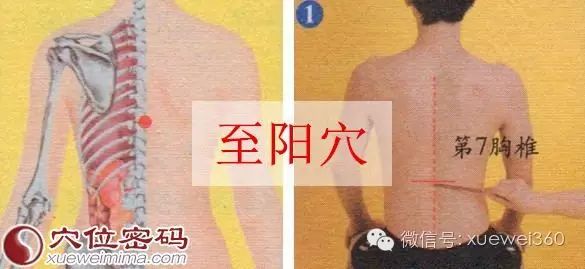
Point Location Method: At the depression below the spinous process of the seventh thoracic vertebra, along the midline of the back.
Main Treatment: Alleviate angina pectoris.
Technique: Angina pectoris often accompanies a feeling of pressure and suffocation in the chest. At this time, pressing the Zhi Yang point (located below the seventh thoracic vertebra, where the patient’s shoulders meet the spine) for 3-6 minutes can relieve the angina pectoris.
Emergency Acupuncture Points and Techniques in TCM
1. Coma: Sudden coma, loss of consciousness, pale face, and limp limbs. 1. Pointing Techniques (1) Pinch Ren Zhong: Use the thumb tip to press deeply on the Ren Zhong point. (2) Rub Nei Guan and Wai Guan: Use the thumb and index finger to rub the Nei Guan and Wai Guan points, applying pressure upwards. (3) Push Da Ling: Use the thumb to push from the Da Ling point to the Qu Ze point. (4) Rub the palms and soles: The practitioner quickly rubs the palms and soles to warm the skin. (5) Press Bai Hui: Use the fingers to press the Bai Hui point for 1-3 minutes. 2. Emergency Points: Shao Shang, Shao Ze, Da Zui, Zu San Li, Yin Bai, San Yin Jiao, Zhi Yin.
2. Heat Stroke: Caused by external heat, leading to the depletion of the body’s Yin energy. Symptoms include dizziness, headache, nausea, vomiting, weakness, and in severe cases, coma. 1. Pointing Techniques (1) Pinch Shi Xuan: Use the fingertip to deeply pinch the Shi Xuan point. (2) Push Da Zui: Quickly rub downwards on the Da Zui point until the skin feels hot. (3) Pat the heart area: Use cold water or white wine to pat the heart area. (4) Rub the five hearts: Use the fingers to rub the palms, soles, and back until the skin feels warm. (5) Pinch the toes: Use the palm to grasp the toes rhythmically. (6) Press Tai Yang: Use both thumbs to press the Tai Yang points. (7) Pinch the brow: Use the thumb and index finger to pinch the brow area. 2. Emergency Points: Ren Zhong, Yin Tang, Bai Hui, Feng Chi, Cheng Jiang, He Gu, Zu San Li, Yong Quan, Dan Tian, Zhong Wan, Nei Guan, Wai Guan, Jian Jing, Shao Shang.
3. Sudden Death: Sudden death can occur in healthy individuals, often while sitting, lying down, or walking, and can also be caused by excessive emotional distress. 1. Pointing Techniques (1) Pinch the tongue and nose: Use the fingertip to pinch the tongue and nose; if there is any reaction, it can save the person. (2) Pinch the earlobe: Use the index finger to pinch the earlobe. (3) Open Ren and Du: Use the index and middle fingers to press the Ren Zhong and Cheng Jiang points, which connect to the Ren and Du meridians. (4) Pinch Shi Xuan and Qi Chuan points. (5) Rub Dan Tian: Place the palm on the Dan Tian area and rub in a clockwise direction. (6) Vibrate the ear: Insert the fingers into the ear and gently vibrate, then relax. 2. Emergency Points: He Gu, Nei Guan, Wai Guan, Shao Shang, Da Ling, Shen Men, Bai Hui, Ya Men, Yin Tang, Tai Yang, Di Ji, Xing Jian, Zhi Yin, Yong Quan.
4. Shaking Syndrome: Caused by the patient’s weakness and insufficient righteous Qi, allowing external pathogens to invade the body, leading to stagnation of Qi and blood, resulting in illness. Symptoms include general swelling, weakness in the limbs, and a blue face. 1. Pointing Techniques (1) Grasp the shoulder blade: Use the fingers to deeply grasp the muscles around the shoulder blade, repeatedly lifting. (2) Push the forehead: Use the fingers to push from the forehead to the Tai Yang point. (3) Rub the five hearts: Use the fingers to rub the palms, soles, and back until the skin feels warm. (4) Pinch Shao Shang and Shao Ze: Use the fingers to deeply pinch the Shao Shang and Shao Ze points. (5) Rub the back of the neck: The practitioner uses alcohol to rub the back of the neck, as well as the Feng Chi, Ya Men, and Da Zui points. (6) Pat the elbow and knee pits: The practitioner uses alcohol or water to pat the elbow and knee pits until the skin turns red and warm. 2. Emergency Points: Ren Zhong, Tuo Ji, He Gu, Zu San Li, Nei Guan, San Yin Jiao, Ran Gu, Shao Chong, Wei Zhong.
5. Poisoning: Caused by the ingestion of various toxic substances or food poisoning. Symptoms include weakness in the limbs, nausea, vomiting, and significant changes in complexion, along with abdominal pain. 1. Pointing Techniques (1) Explore the throat: The practitioner quickly inserts the fingers into the patient’s mouth to gently stimulate the throat to induce vomiting. (2) Push the Ren Meridian: Push from the navel towards the Xuan Zhong point repeatedly to induce vomiting. (3) Rub Zhong Wan: Use the middle finger to press and rub the Zhong Wan point. (4) Pinch Wei Zhong: Use the fingers to deeply press the Wei Zhong point. (5) Pat Da Zui: Use water to pat the Da Zui point. 2. Emergency Points: Ren Zhong, Cheng Jiang, He Gu, Lao Gong, Zu San Li, Yong Quan, Xing Jian, Tian Shu, around the navel.
6. Drowning: Caused by water entering the body, obstructing breathing and causing stagnation of Qi and blood. Symptoms include loss of consciousness and absence of pulse. 1. Pointing Techniques (1) Press the chest and back: The patient lies face down, with the head lower than the feet. The practitioner presses rhythmically on the chest and back. (2) Blow into the nose and mouth: The patient lies flat. The practitioner blows air into the nose, then pinches it. Using the mouth, the practitioner takes a deep breath and blows into the patient’s mouth, repeating several times. (3) Push the three Yin points: Push from the tips of the fingers (toes) towards the body. (4) Rub the five hearts: Use the fingers to rub the palms, soles, and back until the skin feels warm. (5) Blow into the orifices: Use air to stimulate the ear orifices. (6) Pinch Shi Xuan: Use the fingers to deeply pinch the Shi Xuan point. 2. Emergency Points: Tai Yang, Ren Zhong, Di Ji, He Gu, Da Ling, Nei Guan, Wai Guan, Xue Hai, Qi Hai.
7. Stroke: Stroke is often caused by external pathogens invading the internal organs or meridians. Symptoms include sudden loss of consciousness, facial drooping, and hemiplegia. 1. Pointing Techniques (1) Press Feng Chi and Feng Fu: Use the fingers to press upwards on the Feng Chi and Feng Fu points. (2) Press Nei Guan and Wai Guan: Use the thumb and index finger to press the Nei Guan and Wai Guan points. (3) Flick the Gao Mang point: Use the fingers to deeply stimulate the Gao Mang point, flicking left and right. (4) Pinch Ren Zhong, Di Ji, and Wei Zhong: Use the fingers to deeply press the Ren Zhong, Di Ji, and Wei Zhong points. (5) Rub the abdomen: Use the palm to rub the abdomen. (6) Press Zu San Li: Use the fingers to press the Zu San Li point. (7) Push Tuo Ji: Use the fingers to push along the Tuo Ji points. 2. Emergency Points: Shi Xuan, Shao Chong, Xue Hai, Yong Quan, Lao Gong, Da Ling, Shen Men, San Yang Luo, San Yin Jiao, Zhao Hai, He Gu.
8. Epilepsy: Epilepsy is a mental disorder caused by emotional distress, leading to an inability to maintain inner peace. Clinically, it is divided into two categories: epilepsy and mania. 1. Pointing Techniques (1) Flick the Zu Dian: Use the fingers to flick the male patient’s Zu Dian point. Do not flick too much, as it can overstimulate the heart and spirit. (2) Pinch Ren Zhong and Hou Gen: The practitioner uses the fingers to deeply press the Ren Zhong and Hou Gen points. (3) Grasp Jian Jing: Use the fingers to grasp the Jian Jing point. (4) Rub Shen Men and Nei Guan: Use the fingers to rub the Shen Men and Nei Guan points. (5) Press Shen Que and Tian Shu: Use the fingers to press the Shen Que and Tian Shu points.


